
Katharine Houghton Hepburn was an American actress whose career as a Hollywood leading lady spanned over six decades. She was known for her headstrong independence, spirited personality, and outspokenness, cultivating a screen persona that matched this public image, and regularly playing strong-willed, sophisticated women. Her work was in a range of genres, from screwball comedy to literary drama, and earned her various accolades, including four Academy Awards for Best Actress—a record for any performer. In 1999, Hepburn was named the greatest female star of classic Hollywood cinema by the American Film Institute.
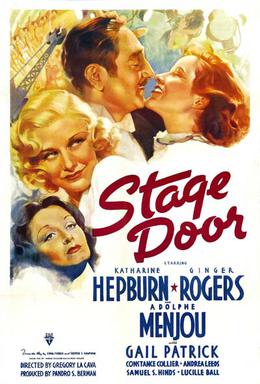
Stage Door is a 1937 American drama film directed by Gregory La Cava. Adapted from the play of the same name, it tells the story of several would-be actresses who live together in a boarding house at 158 West 58th Street in New York City. The film stars Katharine Hepburn, Ginger Rogers, Adolphe Menjou, Gail Patrick, Constance Collier, Andrea Leeds, Samuel S. Hinds and Lucille Ball. It was produced and distributed by RKO Pictures. Eve Arden and Ann Miller, who became notable in later films, play minor characters.

Bringing Up Baby is a 1938 American screwball comedy film directed by Howard Hawks, and starring Katharine Hepburn and Cary Grant. It was released by RKO Radio Pictures. The film tells the story of a paleontologist in a number of predicaments involving a scatterbrained heiress and a leopard named Baby. The screenplay was adapted by Dudley Nichols and Hagar Wilde from a short story by Wilde which originally appeared in Collier's Weekly magazine on April 10, 1937.

Stanislaus Pascal Franchot Tone was an American actor, producer, and director of stage, film and television. He was a leading man in the 1930s and early 1940s, and at the height of his career was known for his gentlemanly sophisticate roles, with supporting roles by the 1950s. His acting crossed many genres including pre-Code romantic leads to noir layered roles and World War I films. He appeared as a guest star in episodes of several golden age television series, including The Twilight Zone and The Alfred Hitchcock Hour while continuing to act and produce in the theater and movies throughout the 1960s.

Mary of Scotland is a 1936 American historical drama film starring Katharine Hepburn as the 16th-century ruler Mary, Queen of Scots. Directed by John Ford, it is an adaptation of the 1933 Maxwell Anderson play, with Fredric March reprising the role of Bothwell, which he also performed on stage during the run of play. The screenplay was written by Dudley Nichols. Ginger Rogers wanted to play this role and made a screen test, but RKO rejected her request to be cast in the part feeling that the role was not suitable to her image.

William Brian de Lacy Aherne was an English actor of stage, screen, radio and television, who enjoyed a long and varied career in Britain and the United States.

Break of Hearts is a 1935 RKO film starring Katharine Hepburn and Charles Boyer. The screenplay was written by the team of Sarah Y. Mason and Victor Heerman, with Anthony Veiller, from a story by Lester Cohen, specifically for Hepburn.

A Woman Rebels is a 1936 American historical drama film adapted from the 1930 novel Portrait of a Rebel by Netta Syrett and starring Katharine Hepburn as Pamela Thistlewaite, who rebels against the social mores of Victorian England. The film was directed by Mark Sandrich; it was the film debut of Van Heflin, and the second last film of David Manners.
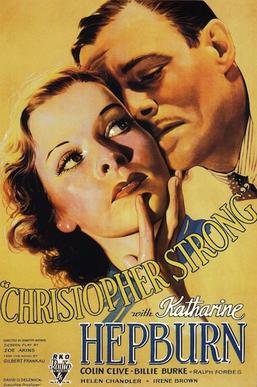
Christopher Strong is a 1933 American pre-Code romantic drama film produced by RKO and directed by Dorothy Arzner. It is a tale of illicit love among the English aristocracy and stars Colin Clive and Katharine Hepburn. The screenplay by Zoë Akins is an adaptation of the 1932 British novel Christopher Strong by Gilbert Frankau.

Sylvia Scarlett is a 1935 American romantic comedy film starring Katharine Hepburn and Cary Grant, based on The Early Life and Adventures of Sylvia Scarlett, a 1918 novel by Compton MacKenzie. Directed by George Cukor, it was notorious as one of the most famous unsuccessful movies of the 1930s. Hepburn plays the title role of Sylvia Scarlett, a female con artist masquerading as a boy to escape the police. The success of the subterfuge is in large part due to the transformation of Hepburn by RKO makeup artist Mel Berns.

Little Women is a 1933 American pre-Code drama film directed by George Cukor, and starring Katharine Hepburn, Joan Bennett, Frances Dee, and Jean Parker. The screenplay, written by Sarah Y. Mason and Victor Heerman, is based on the 1868-1869 two-volume novel of the same name by Louisa May Alcott.

John Elmer Carson, known as Jack Carson, was a Canadian-born American film actor. Carson often played the role of comedic friend in films of the 1940s and 1950s, including The Strawberry Blonde (1941) with James Cagney and Arsenic and Old Lace (1944) with Cary Grant. He appeared in such dramas as Mildred Pierce (1945), A Star is Born (1954), and Cat on a Hot Tin Roof (1958). He worked for RKO and MGM, but most of his notable work was for Warner Bros.
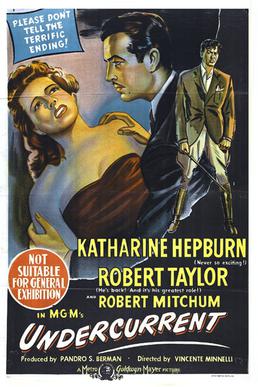
Undercurrent is a 1946 American film noir drama directed by Vincente Minnelli and starring Katharine Hepburn, Robert Taylor, and Robert Mitchum. The screenplay was written by Edward Chodorov, based on the story "You Were There'" by Thelma Strabel, and allegedly contained uncredited contributions from Marguerite Roberts.
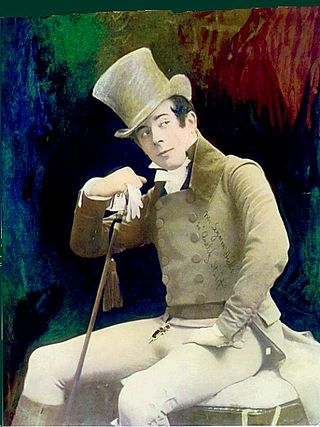
Quality Street is a comedy in four acts by J. M. Barrie, written before his more famous work Peter Pan. The story is about two sisters who start a school "for genteel children".

Alice Adams is a 1935 romantic drama film directed by George Stevens and starring Katharine Hepburn. It was made by RKO and produced by Pandro S. Berman. The screenplay was by Dorothy Yost, Mortimer Offner, and Jane Murfin. The film was adapted from the novel Alice Adams by Booth Tarkington. The music score was by Max Steiner and Roy Webb, and the cinematography by Robert De Grasse. The film received Academy Award nominations for Best Picture and Best Actress.

Quality Street is a 1927 American silent romance film directed by Sidney Franklin and starring Marion Davies, Conrad Nagel and Helen Jerome Eddy. Produced by Cosmopolitan Productions for release through MGM, it was based on the 1901 play of the same name by James M. Barrie. Prints of this film are preserved at the Library of Congress and in the Turner Archive.

Every Girl Should Be Married is a 1948 American romantic comedy film directed by Don Hartman and starring Cary Grant, Betsy Drake and Franchot Tone. Grant and Drake married a year after the film's release.
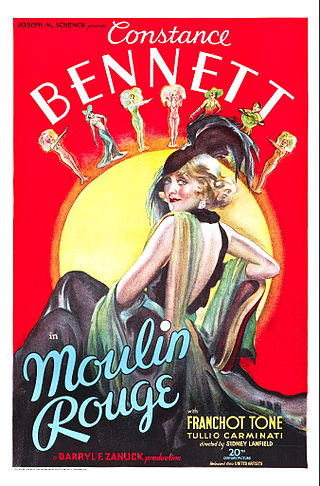
Moulin Rouge is an American pre-Code musical film released on January 19, 1934, by United Artists, starring Constance Bennett and Franchot Tone. It contained the songs "Coffee in the Morning and Kisses in the Night", and "Boulevard of Broken Dreams" with music by Harry Warren and lyrics by Al Dubin. Lucille Ball appears in an uncredited role as a show girl in the film. It has no relation to any other films of/with the same name. The cast also includes Tullio Carminati, Helen Westley, Russ Brown, Hobart Cavanaugh and Georges Renavent.
Maid's Night Out is a 1938 American romantic comedy film made by RKO Radio Pictures and starring Joan Fontaine and Allan Lane. It was directed by Ben Holmes from a screenplay by Bert Granet, adapted by from the radio play Certified by Willoughby Speyers.

The Man Who Found Himself, also known as Wings of Mercy, is a 1937 American aviation film based on the unpublished story "Wings of Mercy" by Alice B. Curtis. The film marked the first starring role for 19-year-old Joan Fontaine, who was billed as the "new RKO screen personality", highlighted following the end of the film by a special "on screen" introduction. Unlike many of the period films that appeared to glorify aviation, it is a complex film, examining the motivations of both doctors and pilots.



















